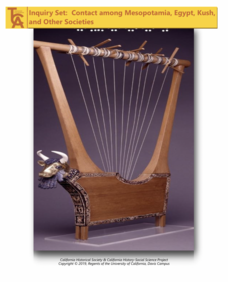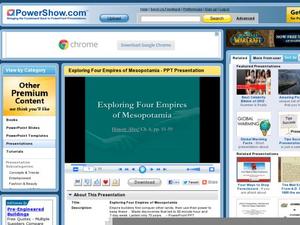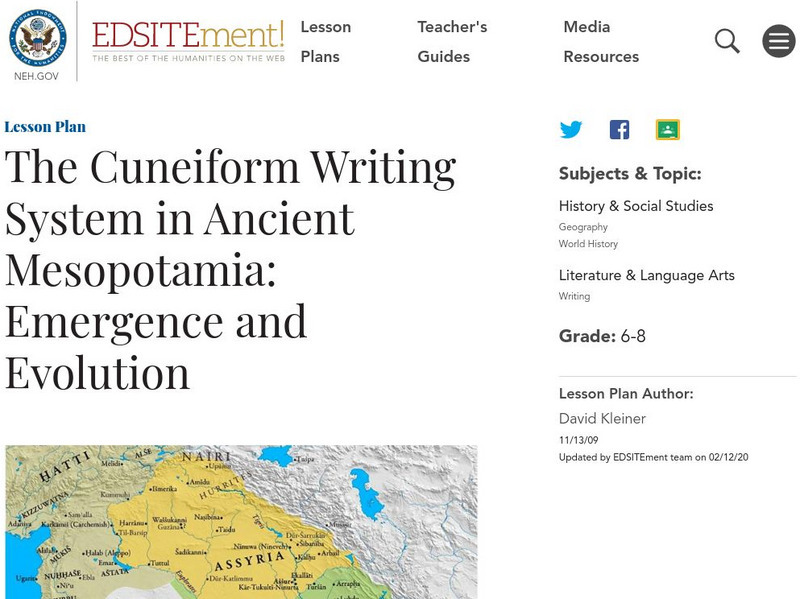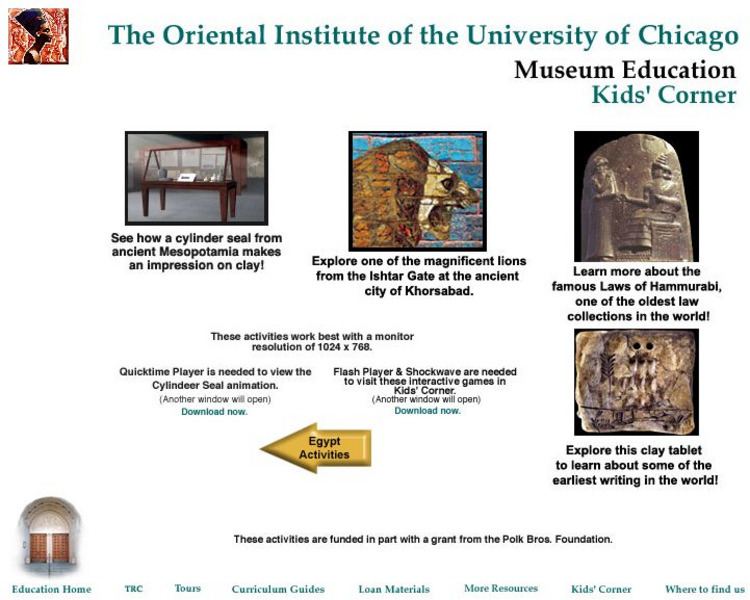Core Knowledge Foundation
Early World Civilizations Tell It Again!™ Read-Aloud Anthology
Ancient world civilizations are the focus of a read-aloud anthology. First graders explore the early world of Mesopotamia, Babylon, the sphinx, and pyramids, get to know people of the Nile, Hatshepsut, and Tutankhamun, and examine world...
University of California
Jewish Holidays
Modern Jewish holidays have ancient roots with many connections to today. Using photographs of primary sources, such as fragments of a shofar, as well as texts, such as the Hebrew Tanakh, learners explore how Jewish holidays reflect...
University of California
Interactions in Baghdad and the Abbasid Caliphate
An interesting resource focuses on the cultures of different peoples that have lived in Baghdad and their interactions. Academics view 11 sources to understand how Baghdad has been home to people of many faiths and cultures throughout...
University of California
Contact among Mesopotamia, Egypt, Kush, and Other Societies
Trade has always been a global affair. Explore what global trade meant for ancient Mesopotamians, Egyptians, and Kushites using a collection of documents from the historic societies. By examining literary works such as the Epic of...
Council for Economic Education
Entrepreneurs in Mesopotamia
While ancient Mesopotamia didn't have the TV show "Shark Tank," it was a time of entrepreneurship as workers began to specialize. Both individual workers and the societal structure encouraged individuals to consider how they could...
Curated OER
Exploring Four Empires of Mesopotamia
Discover what life was like under each of the four main empires that ruled ancient Mesopotamia. Kids can read along or take notes on the Akkadian, Babylonian, Assyrian, and Neo-Babylonian empires. Notes include dates, key rulers,...
Curated OER
Mesopotamian Gods and Goddesses
Each of the Mesopotamian Gods and Goddesses are associated with a city and a symbol. This hand out is intended as a quick reference guide to help learners recall 12 of the most prominent of these figures.
Curated OER
Hammurabi's Code
Here is a narrow view of Hammurabi's code. Without cultural, social, or political context, this presentation asks students what they think of the concept of an eye for an eye. Images of Babylonian artifacts and Hammurabi's laws are...
Curated OER
Mesopotamia
Students map Mesopotamia. In this Geography lesson, students are introduced to Ancient Mesopotamia. Students use an atlas to label the defining features and areas of Mesopotamia on a map.
Curated OER
Civilization in Ancient Mesopotamia
In this ancient Mesopotamia worksheet, students respond to 29 short answer and fill in the blank questions about the ancient civilization.
Curated OER
The Cuneiform Writing System in Ancient Mesopotamia: Emergence and Evolution
Students research the parallel development and complexity of writing and civilization in ancient Mesopotamia. In this ancient Mesopotamia lesson, students analyze the Cuneiform writing system in ancient Mesopotamia and how the...
Curated OER
The First Farmers
Students investigate how constant irrigation, with repeated evaporation of water eventually ruined farm land in southern Mesopotamia. They discuss the development of irrigation.
University of Chicago
University of Chicago Library: Teaching the Middle East: Identity in Mesopotamia
Learning module looks at the ancient peoples of Mesopotamia, including the Sumerians and Akkadians. Particular emphasis given to the status of women in the region, religious practices, and language.
Better Lesson
Better Lesson: Cities in Mesopotamia: Understanding a Complex Text
In this lesson, 6th graders use details from a nonfiction article to create a visual representation and then, from that visual, provide evidence that demonstrates their understanding of the text. Includes samples of student work and lots...
BBC
Bbc History: Iraq Conflict in Context
A page full of articles and interactive links that looks at the history of Iraq, the current situation, and possible reasons for the constant conflict. Archived.
National Endowment for the Humanities
Neh: Edsit Ement: The Cuneiform Writing System in Ancient Mesopotamia
In this lesson plan, middle schoolers will consider "The Cuneiform Writing System in Ancient Mesopotamia: Emergence and Evolution." The plan includes worksheets and other student materials that can be found under the resource tab.
University of Chicago
Museum Education: Kids' Corner
An interactive examination of artifacts from Mesopotamia. Find out about early writing, the code of Hammurabi, and cylinder seals.
University of Chicago
University of Chicago Library: Teaching the Middle East: Geography
Learning module on the physical geography of the Middle East considers the impact of the landscape and climate on both ancient and modern societies in the region.
Other
Classics Technology Center: Ancient Mesopotamia
This site from the Classics Technology Center provides materials concerning ancient Mesopotamia collected through teacher collaboration. Focuses on geography, religion, economics, clothing, and achievements. Also includes classroom...
Tom Richey
Tom Richey: Power Point: Ancient Mesopotamia
PowerPoint presentation by Tom Richey provides a 52 slide lecture on Mesopotamia.
Tom Richey
Tom Richey: Power Point: Hammurabi's Code
PowerPoint slideshow from Tom Richey on ancient Mesopotamia and Hammurabi's Code.
Able Media
The Asclepion: Medicine in Ancient Mesopotamia
This site is an online resource if you are researching medicine in Ancient Mesopotamia. Many sections include historical background, sources, concepts, and practitioners.
United Nations
Unesco: Shushtar Historical Hydraulic System
The Shushtar Historical Hydraulic System, now a World Heritage Site in Iran, was first built in the 5th century BC, and is still partly operational today. The complexity of this site is testament to the engineering genius of the...
World History Encyclopedia
World History Encyclopedia: Babylon
Detailed discussion of Babylon, the most famous city from ancient Mesopotamia. Learn about its history, King Hammurabi, the Assyrians, the Chaldeans, Nebuchadnezzar, the Persian conquest, and Babylon's decline.
























